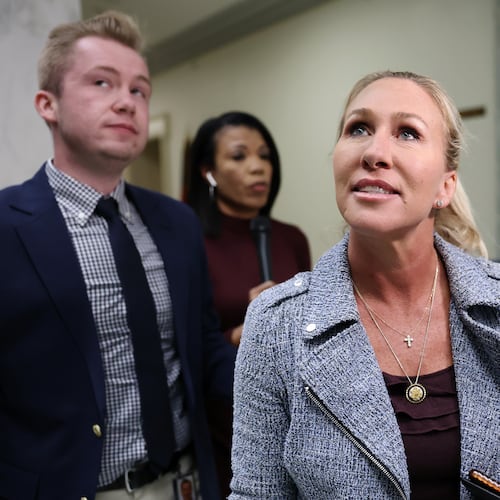Our risk management plans generally have assumed that hurricanes cause major impacts only within a hundred miles of the coast, but Helene (2024), Idalia (2023), Michael (2018) and Sandy (2012) have shown that assumption to be dangerous. Helene brought hurricane- and tropical storm-force wind gusts when it hit eastern Georgia, upstate South Carolina and western North Carolina, more than 350 miles from landfall, and, combined with a preceding frontal system, dumped almost 2½ feet of rain (more than four months of average rainfall) across some parts of the Appalachians. Atlanta meteorologist Brad Nitz estimated that 25.5 billion gallons of water fell over the city of Atlanta.
Most pre-hurricane communication focused on a likely track through or near Atlanta, so residents of eastern Georgia, upstate South Carolina and the Appalachians were significantly affected by a slight eastward shift just before landfall. The National Weather Service adequately warned of excessive rainfall potential in the days prior to the storm. But it is not clear how explicit or widespread calls for evacuations were. Additionally, many people might not have perceived a threat level warranting the stocking up of fuel or dry goods.
Credit: Handout
Credit: Handout
Credit: Handout
Credit: Handout
Credit: Handout
Credit: Handout
Credit: Handout
Credit: Handout
People in extremely high-risk zones — for example, mountain valleys — certainly are familiar with flood or wind hazards, but might not have fully understood the broad scope of dangers, which also included mudslides, power failures, compromised transportation arteries, dam failures and other cascading impacts. Utility companies had staged most boom trucks and crews in the Coastal Plain, where damage usually is concentrated. Some local emergency rescue teams lacked motorized rafts and could not enter extreme flows to save lives.
The impacts of Helene immediately evoked comparisons to the Great Floods of 1916 in the region. A series of hurricanes caused what is considered the worst natural disaster in recorded history for the mountainous region of North Carolina. Though the impacts of Helene are not unprecedented, some things that are notable:
· Since 1916, the footprint of human activity and infrastructure has increased dramatically.
· Current residents do not have a benchmark or reference for how to react to a storm of this magnitude.
· Climate change has accelerated the water cycle, and hurricanes also are tapping into extremely warm ocean waters to intensify storms.
· Risk-communication approaches have remained relatively stagnant (e.g., watches, warnings and cones).
We can do better. Through infrastructure and communication changes, we can save lives, reduce substantial social and economic disruption and increase societal resilience to hurricanes.
Burying the central distribution lines (referred to as “undergrounding”) could accelerate restoration of power. Falling trees don’t cut buried distribution lines. Undergrounding is expensive and difficult where bedrock is near the surface. We can’t do it all at once, and we probably don’t need to. But if we prioritize the distribution lines from which the rest of the system can be restored, we can reduce the extent and duration of power outages. With our current system, power won’t be restored to much of western North Carolina and upstate South Carolina for a week or two. A one-day power outage is an adventure, a two-day power outage is annoying and anything beyond that causes major problems.
Even this solution is not a panacea. Undergrounding still carries risk from landslides and flooding, so “out-of-the-box” engineering would be required. In Western states, jurisdictions have considered a combination of distributed generation and battery storage options to gain resiliency against wildfires.
Our municipal water supply systems aren’t built to handle these types of events. We need distributed water sources to provide non-potable water from wells or high-quality streams during emergencies so people can boil water and flush toilets. This would give people water to boil for drinking, for bathing and for flushing toilets.
Municipal water supply systems typically are segmented in interconnected loops, with frequent shut-off valves to isolate broken lines and maintain system pressure. Every system needs to run failure analysis to identify where breaks could take large portions of the system offline. After Helene, the system in Asheville has so many breaks that it is difficult to pressurize the system.
Even where cell service was maintained, many people in the storm’s path lost communication when their cellphone batteries discharged. People could not contact their families or emergency services. Municipalities need to have portable generators to send out in the community so people can charge their communication devices.
Weather warning paradigms need to be reimagined to convey the broader impacts of hurricanes, like rainfall, mudslides, tornadoes and even heat. When flash flooding and landsliding are likely, we need evacuation orders for mountain communities the same as we have for coastal counties. Lots of people in North Carolina and Tennessee are trapped in valleys and ridges with no road access.
Culverts and bridges, especially on roadways that provide connections to emergency services and evacuations routes, need higher design standards that account for current and future conditions, as opposed to designing for the past.
Flood hazard maps also need to be updated and improved to account for future conditions. This must be coupled with better risk communication. For example, to have 90% confidence of flood protection over a 30-year mortgage, we would need to stay out of the 285-year flood plain, not the 100-year version.
Effectively communicating the risks of natural disasters is problematic. If you tell people that almost all of western North Carolina is a dangerous place to live, they will tune you out. We must separately identify the extremely high-risk areas. People tend to assume that a river never will rise higher than its historic record. We already know that some people on the coast ignore evacuation warnings. Engineers and natural scientists must work together with communities to effectively reach more people with usable information.
Hurricanes long have been a part of life for the Gulf and Atlantic coasts, but the hurricane landscape has changed with substantially warmer oceans producing more large and powerful storms packing more punch further inland. Costs will increase even without stronger storms, but the two are compounding to put communities at greater risk. The I-26 bridges that washed into the Nolichuky River in Tennessee were 500 miles from Helene’s landfall. We cannot continue business as usual.
Brian Bledsoe is founding director of the Institute for Resilient Infrastructure Systems at the University of Georgia and has more than 35 years of experience as a civil engineer, hydrologist and environmental scientist in the private and public sectors. J. Marshall Shepherd is a leading international expert in weather and climate, and is the Georgia Athletic Association Distinguished Professor of Geography and Atmospheric Sciences at the University of Georgia, director of the University of Georgia’s Atmospheric Sciences Program and an associate dean in the Franklin College of Arts and Sciences. Brock Woodson is an assistant professor in the College of Engineering at the University of Georgia and review editor, ICES Journal of Marine Science. C. Rhett Jackson is the John Porter Stevens Distinguished Professor of Water Resources and a member of the IRIS and River Basin Center faculty and is interim dean of academic affairs in the Warnell School of Forestry and Natural Resources.
The Latest
Featured





